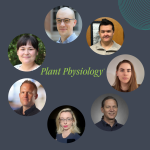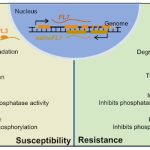Building Your Professional Scientific Network
A network is defined as “an extended group of people with similar interests or concerns who interact and exchange knowledge for mutual assistance, support, and to increase learning” (Kools & Stoll, 2016). In the era of increasing tools, techniques, and ideas, it is challenging to work in isolation. Collaboration is a new form of scientific development as sharing and discussing ideas often results in highly relevant outputs, which would not have been thought of previously.
Cross-functional work between researchers in different disciplines is critical to good science and innovation (Eberle et al., 2021). Establishing relevant connections early in academia can help secure good placements or positions. Scientists must prioritize engaging in small chats, even if it is awkward and challenging, to forge lasting relationships with people around them (Joubert et al., 2018). Your network can open more doors than any amount of diligent bench work. Genuine dialogue about mutually beneficial interests between you and the other person is necessary for effective networking.
However, it might not be easy to get to the point where networking is enjoyable rather than tedious. It frequently requires expertise and practice to start enjoying and benefiting from networking. Developing professional connections through networking involves being genuine, exchanging information, and cooperating to accomplish a common objective. Here are some tips for building your professional scientific network.
- Cultivate an online presence. The first step of building a scientific network is to have a social media profile with a professional photo, current affiliation, skills listing, and a short bio. A decent social media profile attracts people and helps them understand your background and interests. This saves time lost in petty conversation and allows people with genuine shared interests to connect. Although Facebook, Youtube, Whatsapp, and Instagram are the top social media platforms (Statista, 2023), they are not the best for professional networking. These platforms are targeted to a wider audience for personal use. Twitter, Linkedin, ResearchGate, and ORCiD are better alternatives for professional networking (Segado-Boj et al., 2019).
- Join professional associations and social media groups. Another way to connect with like-minded people is to join professional societies and groups. People in academia can join interest-specific groups to exchange ideas and utilize existing social connections to build a strong network (Hill et al., 2019). Searching for like-minded people from social media platforms is often tricky, and professional societies just do the work for you. Societies often have access to specific libraries and larger audiences, and being a part of that society enables you to access them. The American Society of Plant Biologists (ASPB) is a perfect example. It has a network of plant biologists from all over the world and a vast audience. Plantae, a crowdsourced initiative powered by ASPB, shares a vast resource of research updates, scientific articles, teaching tools, podcasts, and webinars for free to the global community, simplifying the complex research outcomes for the larger audience. Funding agencies like the National Institutes of Health (NIH) have also shown interest in networking applications for scientific communities. A grant of $27 million has previously been awarded to two research teams for developing VIVO, a social networking site for scientists, and eagle-i, for connecting scientists to resources (reagents/cell lines) located at other institutions (Maxmen, 2010). Similarly, several professional societies based on one’s particular field can be found, which are the doors to networking.
- Attending conferences and symposiums. National and international conferences are excellent networking opportunities. Besides scientific discussions, they integrate professionals and students under the same roof, facilitating face-to-face conversations. A face-to-face conversation is better than online interactions for building a connection (Ebner et al., 2019). Presenting posters at scientific conferences or giving an oral presentation often highlights your presence rather than simply attending a conference. Q&A sessions are also an effective way to connect, and the connections made at these events can be easily maintained later via emails and social media. Virtual conferences, especially during the COVID, dissolved the logistic barriers and carbon footprints (Sarabipour et al., 2021) and increased the accessibility to many diverse researchers, making them more inclusive and affordable for early-career scientists. Besides conferences, additional forums such as workshops, seminars, symposiums, trainings, and internships can provide additional networking opportunities. For students, it often becomes difficult to comprehend results or gain access to relevant information. Presenting findings in an intimate setting (e.g., lab/class) can serve as a secure conversational network. Utilizing the skillsets closest to one is the basic and most helpful strategy for networking.
- Maintain your network. As Daly & Stoll (2018) state, “The ability to work well with others, tap into networks, and draw on collective intelligence is of critical importance as we move deeper into a knowledge society in which collaboration, emotional intelligence, social skills, and connecting to an interdependent social network are increasingly necessary, and are grounded in good science.” Quality, rather than quantity, should be the focus while expanding your network. The professional relationship depends on the value that you can provide. It is important to keep in touch with your network via short emails, liking and commenting on their social media posts, and mentioning them on relevant posts. Recognizing your network in conferences and workshops will make them feel valued, and they will respect this relationship in the long run.
Effective networking is not trying to meet the most people possible at an event. Rather, it is about making lasting connections with a few key people who can attest to your skills and are willing to recommend you to a few other well-connected people. Being well-connected is crucial for job seekers and those looking for them, particularly because 85% of vital positions are filled through networking (Adler, 2016).
Opportunities come through people, and building a professional scientific network is a prerequisite for every student and early career scientist. We need to understand that networking is not an immediate process. It takes time and communication, and refining skills such as appropriate body language and behaviour, preparing elevator pitches, and representing our best on the internet. Yet, appearing genuinely interested in the people you connect with is crucial. Even if the network does not have something to give immediately, maintain friendly contact. Every contact is more than a potential job interview; it is a seed for a future relationship.
References
- Biggest social media platforms 2023. Statista. (2023). [accessed 2023 March 6]. https://www.statista.com/statistics/272014/global-social-networks-ranked-by-number-of-users/
- Adler, L. (2016). New Survey Reveals 85% of All Jobs are Filled Via Networking. Linkedin. [accessed 2023 March 6]. https://www.linkedin.com/pulse/new-survey-reveals-85-all-jobs-filled-via-networking-lou-adler/
- Maxmen, A. (2010). Science Networking Gets Serious. Cell, 141(3), 387-389. https://doi.org/10.1016/j.cell.2010.04.019
- Ebner, C., & Gegenfurtner, A. (2019). Learning and Satisfaction in Webinar, Online, and Face-to-Face Instruction: A Meta-Analysis. Frontiers In Education, 4. https://doi.org/10.3389/feduc.2019.00092
- Sarabipour, S., Khan, A., Seah, Y., Mwakilili, A., Mumoki, F., & Sáez, P. et al. (2021). Changing scientific meetings for the better. Nature Human Behaviour, 5(3), 296-300. https://doi.org/10.1038/s41562-021-01067-y
- Hill, L. B., Austin, A. E., Bantawa, B., & Savoy, J. N. (2019). Factors of success: building and sustaining teaching professional development opportunities for doctoral students and postdocs. Higher Education Research & Development, 1-15. https://doi.org/10.1080/07294360.2019.1616677
- Kools, M., and L. Stoll. 2016. What Makes a School a Learning Organization? Paris: OECD. Leithwood, K. 2016. “Department-head Leadership for School Improvement.” Leadership and Policy in Schools 15 (2): 117–140. https://doi.org/10.1080/15700763.2015.1044538
- Eberle, J., Stegmann, K., Barrat, A., Fischer, F., & Lund, K. (2021). Initiating scientific collaborations across career levels and disciplines – a network analysis on behavioral data. International Journal Of Computer-Supported Collaborative Learning. https://doi.org/10.1007/s11412-021-09345-7
- Joubert, S. (2018). The Importance of Networking in Science. Northeastern University Graduate Programs. [accessed 2023 March 6]. https://www.northeastern.edu/graduate/blog/biotechnology-networking-tips/
- Segado-Boj, F., Díaz-Campo, J., Fernández-Gómez, E., & Chaparro-Domínguez, M. (2019). Spanish academics and social networking sites: Use, non-use, and the perceived advantages and drawbacks of Facebook, Twitter, LinkedIn, ResearchGate, and Academia.edu. First Monday. https://doi.org/10.5210/fm.v24i5.7296
- Daly, A.J. & Stoll, L. (2018). Looking back and moving forward: Where to next for networks of learning? In Brown, C., Poortman, C.L. (Eds.), Networks for learning. Effective collaboration for teacher, school and system improvement, Routledge, London,pp.205-214.http://taylorfrancis.com/chapters/edit/10.4324/9781315276649-13/looking-back-moving-forward-alan-daly-louise-stoll
______________________________________________
About the Author
Rajarshi Sanyal is a PhD Scholar at the National Institute of Plant Genome Research, India and a 2023 Plantae Fellow. He is currently working on investigating plant development in response to environmental signals and optimizing plant developmental features for efficient photosynthesis in crop plants. Besides academic communications, he loves traveling and sports. You can find him on Twitter at @rajarshi_sanyal.



